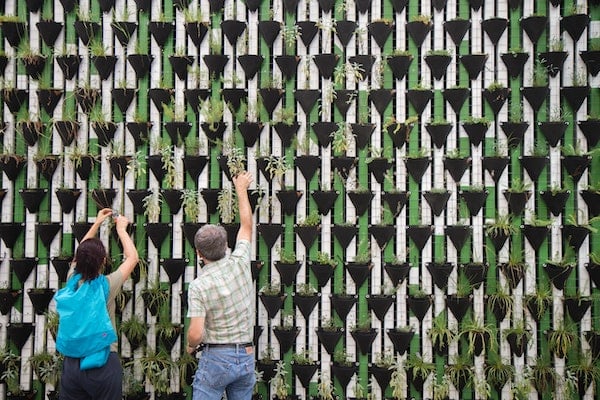Published on
Student Growth and Lifelong Learning: It’s Just Not for the “Mature”

One of the five value statements listed by my institution, the University of North Carolina at Greensboro, is: “An institution offering classes on campus, off campus, and online for degree-seeking students and life-long learners.” As I read this statement, which is similar to that of many other institutions across the country, I found that it assumes that students seeking a degree are different than those coming in as lifelong learners. In actuality, aren’t we ALL lifelong learners?
One of the things I’ve been contemplating over the past few days, as I listen to and read students’ worries about what college will look like for the fall 2020 semester is that educators need to be helping students shift their perspectives about college—and education in general. Most students leave high school and go off to college with the following mindset: “Tell me what I can do with this major and what kind of jobs I can get when I graduate.” This is a naïve and impractical approach to college when only 62% graduate from a four-year school (in six years), 33% graduate from a two-year school (in three years), at least 33% of declared majors change their major at least once, and 25% to 50% enroll as undecided, undeclared, exploratory, etc. In our Life Design Catalyst Program, the informal survey we conduct found that over 70% want help “figuring out what to do in life,” which begs the question: “What should I do with my life?”
As I continue to implement Life Design Catalyst work and help students create growth year plans, I am convinced that it is imperative for them to ask different questions of their institutions, questions such as, “How will your institution provide the resources to help me become my best self and profoundly serve others?” Taken to an even deeper level, a more insightful question would be, “How will your institution support me now that I know who I want to be, who I want to help, and the problem I am here to solve?” Imagine what the college experience would look like if institutions were constructed to provide support and resources to help students design meaningful life plans, instead of following a prescribed academic path not necessarily aligned with their respective passions, interests, and/or concerns? It would truly be a lifelong learning experience for them regardless of age. And isn’t that educational institutions’ mission—to create and foster lifelong learners?
So, what is lifelong learning? Lifelong learning is self-initiated and self-directed education focused on personal development and fulfillment. Lifelong learning can be formal or informal and occurs within and outside of educational institutions. Lifelong learning happens on a daily basis, through formal education, socialization, trial and error, and/or self-initiated study, and is based on our natural interests, curiosity and personal motivations. The desire to learn must come from ourselves, not someone else. Lifelong learning is ongoing, occurring throughout one’s lifetime.
Key characteristics of lifelong learning:
- Voluntary
- Ongoing
- Self-directed, self-initiated and self-motivated
- Doesn’t necessarily require a cost
- Often informal
- Self-taught or through sought-after specific instruction
- Motivation is driven by personal development or personal fulfillment
- Fosters continuous development and improvement
- Pursuit of knowledge for personal and/or professional reasons
- Age independent: it lasts a lifetime
- Having an attitude of “want to do,” not “have to do.”
People typically associate learning in the classroom with a physical school building; however, most lifelong learning occurs daily in informal settings: through talking with other people; browsing the internet, reading a newspaper, book, or magazine; and engaging in a personal interest. Engaging in lifelong learning enhances our understanding of the world, provides us with increased and enhanced opportunities, and improves our quality of life.
Years ago, it was not unusual for degree programs to provide ample room in their curriculum for lifelong learning through general education courses and elective credits. In addition to broadening a student’s academic knowledge and experience, these courses sometimes ignited a student’s imagination, interests and passions. These new interests sometimes resulted in a change of major, an addition of a minor, and, in some cases, a complete change in career direction. Unfortunately, these changes in academic path resulted in extended graduation beyond the intended date.
With an increase in the number of students at four-year institutions graduating in five or six years, colleges are under pressure to provide students with specific academic plans designed to keep students on track to graduate in four years or less. While many applauded these more stringent requirements as efforts to prevent students from wandering aimlessly from course to course, these new degree requirements provided fewer general education choices and/or reduced elective credits.
Students who embrace the exploration process now have to find ways for this to happen outside the educational system, since most curriculum plans are too restrictive for true exploration and lifelong learning. Lost along the way is the opportunity to explore new areas of interest, careers and insights about themselves and the world around them. It is time for us to embrace the concept of lifelong learning for ALL of our students, not just our “older” or “mature” students. We are all students–students of the world and students of life. We need to empower our students to take control of their education. It’s time to allow them to create educational experiences aligned with what matters to them, that engages their hearts, minds, bodies and spirits, and solves real-world problems for others. And that, my friends, is the epitome of lifelong learning!
Author Perspective: Educator



